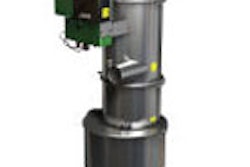American industrial facilities -- including food processors -- generate and dispose of more than 8 billion tons of solid waste annually, according to the Environmental Protection Agency (EPA). In the food industry, waste includes everything from the obvious -- greases, fats, oils, ingredients, byproducts and process wastewater -- to the less obvious, such as damaged goods, defective packaging or product overruns. Managing this waste is expensive and labor-intensive. Companies spend money on materials, manpower, cartage and disposal fees, and in many cases, surcharges, fines and penalties. While many food manufacturers have adopted recycling strategies, most of these have been simple end-of-pipe solutions. Ordinary recycling efforts are an important step forward and do help companies reduce their waste and waste-processing costs, but most of these programs come with hefty price tags that are often higher than the processing cost savings.
A concept called beneficial residuals management, on the other hand, is a holistic approach to waste reduction that can help manufacturers derive income or provide cost avoidance by removing materials from their waste streams, and selling or recycling those materials to other manufacturers that use them for entirely unrelated processes. This eliminates the waste, offsets some or all of the management costs, and makes both the waste-generator and residual-user companies greener, and their processes more sustainable, making it a win-win situation.
The Need for Green
With today’s increased environmental regulations and highly educated consumers demanding unprecedented eco-accountability, companies are being forced to rethink their existing waste management and recycling strategies. Further, a recent study by McKinsey & Company shows that 76 percent of executives believe that engaging in sustainability contributes positively to long-term shareholder value. That puts it near the top of the list for many corporate leaders.
Even behemoth Wal-Mart has gotten the message. In 2009, it established a sustainability index, asking each of its 100,000 suppliers worldwide to complete a brief green-practices survey. The first four questions pertain directly to waste reduction.
Tasty Baking Co.’s plant in rural Oxford, Pennsylvania earned kudos from Wal-Mart based, in large part, on its beneficial residuals management program for wastewater. Instead of incinerating, the company now transports the wastewater to local farms for agricultural utilization, so the nutrients in the wastewater are consumed by field crops.
The change reduces the facility’s carbon footprint and saves money in several ways:
- The farms receiving the water are much closer than the incinerator, reducing vehicle use and reducing consumption of fossil fuels.
- The farm crops contribute positively to air quality by making oxygen from carbon dioxide.
- Water reuse lowers dependence on rapidly shrinking water resources and provides a way to replenish the groundwater aquifer.
Green Alternatives
The beneficial residuals management concept mirrors the organics-recycling pyramid in which preventing waste creation is at the top. The next most desirable outcome is reuse, which is where most beneficial residuals management programs fit. Within the reuse category, beneficial residuals’ hierarchy is to recover and/or create materials that can be used for:
- Humans to eat or use.
- Feeding animals.
- Agricultural benefit.
- Product manufacture.
- Net-positive energy generation.























